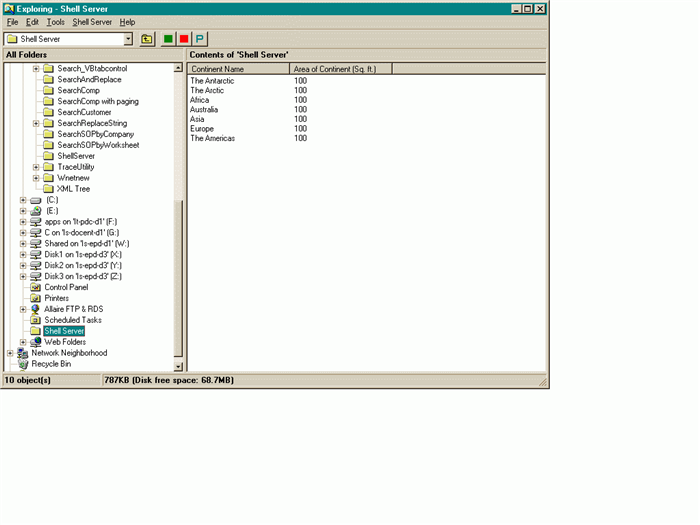
Introduction
Here is another Shell extension sample - the one which extends Windows Explorer's user interface.
Let me note that my sample does not do anything useful - I'll try to think of something later - it just shows how to write this kind of shell extension.
How to install it?
Copy the ShellServer.dll to any directory of your choice and register it using regsvr32.exe. Next time when you open the Windows Explorer you'll see one more folder in the left pane tree - Shell Server. Just click on it and you'll see it in action.
a
ShellServer integrates its own menu, toolbar buttons, text in the status bar with Windows Explorer and displays
a listview control in the right pane of Explorer with some data.
There are 4 classes in the project:
- CFolderObj which implements IShellFolder and IPersistFolder interfaces.
- CViewObj which implements IShellView interface.
- CMainDlg
- CShellListView
CFolderObj
and
CViewObj are implemented using ATL,
CMainDlg and
CShellListView use WTL.
The implementation is pretty straightforward, except for one thing - if you want to handle window messages in the listview control you have to create the modeless dialog first and place a listview control on it.
I wrote it on WinNT 4.0 sp6 and did not test on Win95/98.
That's it. Enjoy it and use it any way you want. Do not even mention my name (I am a very modest person).
Credits - www.clipcode.com
This member has not yet provided a Biography. Assume it's interesting and varied, and probably something to do with programming.
 General
General  News
News  Suggestion
Suggestion  Question
Question  Bug
Bug  Answer
Answer  Joke
Joke  Praise
Praise  Rant
Rant  Admin
Admin 







 , but I wonder is there any way through which I can add the buttons to Windows Explorer
, but I wonder is there any way through which I can add the buttons to Windows Explorer
 .
. 
